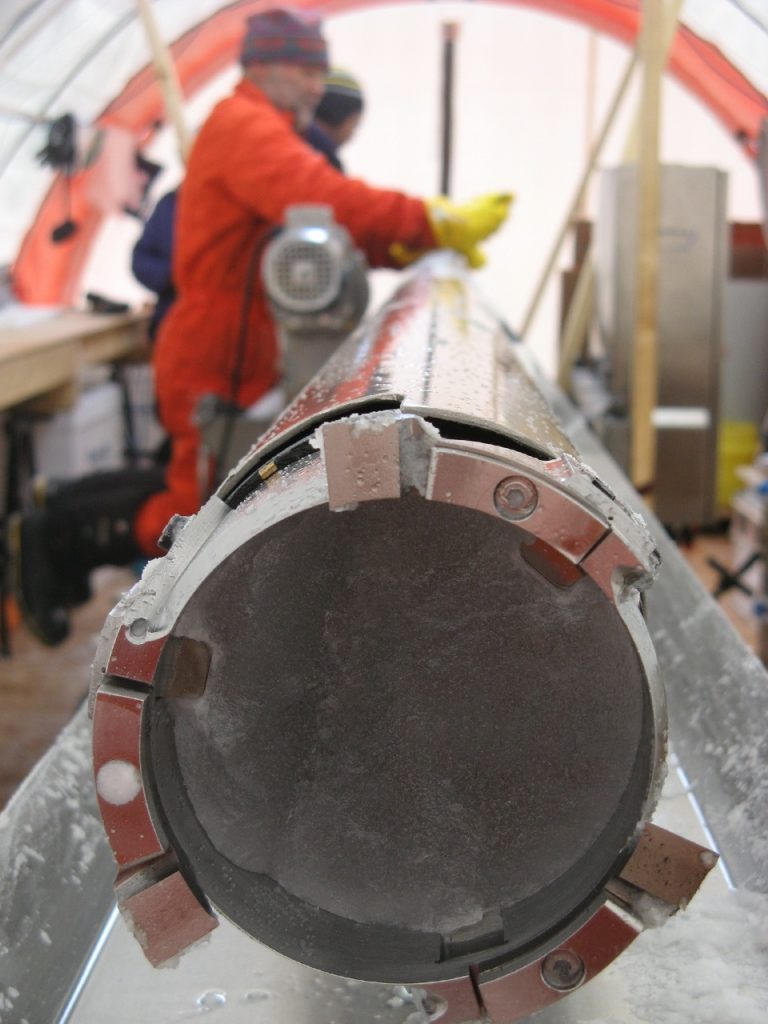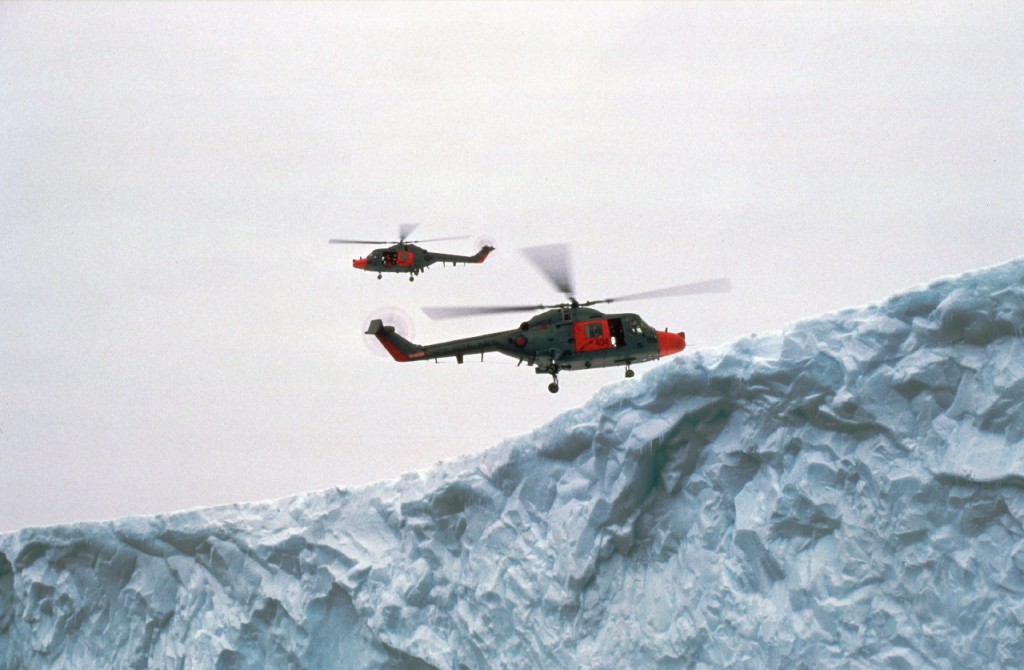New climate history adds to understanding of recent Antarctic Peninsula warming
Results published this week by a team of polar scientists from Britain, Australia and France adds a new dimension to our understanding of Antarctic Peninsula climate change and the likely causes of the break-up of its ice shelves.

The first comprehensive reconstruction of a 15,000 year climate history from an ice core collected from James Ross Island in the Antarctic Peninsula region is reported this week in the journal Nature. The scientists reveal that the rapid warming of this region over the last 100 years has been unusual and came on top of a slower natural climate warming that began around 600 years ago. These centuries of continual warming meant that by the time the unusual recent warming began, the Antarctic Peninsula ice shelves were already poised for the dramatic break-ups observed from the 1990’s onwards.
The Antarctic Peninsula is one of the fastest warming places on Earth – average temperatures from meteorological stations near James Ross Island have risen by nearly 2°C in the past 50 years.
Lead author Dr Robert Mulvaney OBE, from British Antarctic Survey (BAS) says,
“This is a really interesting result. One of the key questions that scientists are attempting to answer is how much of the Earth’s recently observed warming is due to natural climate variation and how much can be attributed to human activity since the industrial revolution. The only way we can do this is by looking back through time when the Earth experienced ice ages and warm periods, and ice cores are a very good method for doing this.”

Dr Mulvaney continues,
“We know that something unusual is happening in the Antarctic Peninsula. To find out more we mounted a scientific expedition to collect an ice core from James Ross Island — on the northernmost tip of the Peninsula. Within the 364m long core are layers of snow that fell every year for the last 50,000 years. Sophisticated chemical analysis — at BAS and the NERC Isotope Geosciences Laboratory (part of British Geological Survey) — was used to re-create a temperature record over this period.
“For this study we looked in detail at the last 15,000 years — from the time when the Earth emerged from the last ice age and entered into the current warm period. What we see in the ice core temperature record is that the Antarctic Peninsula warmed by about 6°C as it emerged from the last ice age. By 11,000 years ago the temperature had risen to about 1.3°C warmer than today’s average and other research indicates that the Antarctic Peninsula ice sheet was shrinking at this time and some of the surrounding ice shelves retreated. The local climate then cooled in two stages, reaching a minimum about 600 years ago. The ice shelves on the northern Antarctic Peninsula expanded during this cooling. Approximately 600 years ago the local temperature started to warm again, followed by a more rapid warming in the last 50–100 years that coincides with present-day disintegration of ice shelves and glacier retreat.”
Co-Author Dr Nerilie Abram formerly from British Antarctic Survey and now with the Research School of Earth Sciences, at The Australian National University says,
“The centuries of ongoing warming have meant that marginal ice shelves on the northern Peninsula were poised for the succession of collapses that we have witnessed over the last two decades. And if this rapid warming that we are now seeing continues, we can expect that ice shelves further south along the Peninsula that have been stable for thousands of years will also become vulnerable.”
Olivier Alemany, from the French Laboratoire de Glaciologie et Géophysique de l’Environnement was part of the expedition. He says,
“The international polar science community has collected and analysed ice cores from Antarctica and Greenland as part of an effort to reconstruct the Earth’s past climate and atmosphere. Our team wanted to understand how the recent warming and the loss of ice shelves compared to the longer term climate trends in the region.”
This research makes a significant contribution to the understanding of the role that Antarctica’s ice sheets play in influencing future climate and sea-level rise. It was funded by NERC (Natural Environment Research Council).
ENDS
Issued by British Antarctic Survey Press Office:
Press Office Contacts
- Athena Dinar, British Antarctic Survey Tel. +44 (0) 1223 221414 email: amdi@bas.ac.uk mobile: 07736 921693
- Audrey Stevens, British Antarctic Survey Tel. +44 (0) 1223 221230 email: auev@bas.ac.uk
Authors contacts:
- Dr Robert Mulvaney, British Antarctic Survey tel. +44 (0) 1223 221436, email: rmu@bas.ac.uk
- Dr Nerilie Abram, The Australian National University tel. +61 (0) 2 6125 1978, email: Nerilie.abram@anu.edu.au
- Carol Arrowsmith, NERC Isotope Geosciences Laboratory tel. +44 (0) 115 936 3514 email: caar@nigl.nerc.ac.uk
- Olivier Alemany, Laboratoire de Glaciologie et Géophysique de l’Environnement tel. +33 (0) 476824221 email: Olivier.Alemany@lgge.obs.ujf-grenoble.fr
Notes for Editors:
The paper, Recent Antarctic Peninsula warming relative to Holocene climate and ice shelf history by Robert Mulvaney, Nerilie Abram, Richard Hindmarsh, Carol Arrowsmith, Louise Fleet, Jack Triest, Louise Sime, Olivier Alemany and Susan Foord is published in the Advanced Online Publication of Nature on 22 August 2012.
This research is part of the British Antarctic Survey’s Chemistry & Past Climate Programme which concentrates on the Quaternary period (the last 2.6 million years). Ice-core and other palaeorecords can be analysed for that period. Although many aspects of the Earth were similar to the present, large climate changes, as well as periods warmer than today, can be observed. BAS scientists investigate how different parts of the Earth System interacted to produce the large climate changes that occurred naturally in the past, and complement this with investigations on how changing sea-ice and ocean conditions affect the present chemistry of the polar atmosphere.
The ice core was collected from James Ross Island in 2007/8 with the help of the Royal Navy’s polar vessel HMS Endurance which deployed the team and their equipment with the ship’s Lynx helicopters.
The French National Center for Coring and Drilling (C2FN) contributed its ice core drilling system and engineering time to this project.
Glossary:
- Ice Cores
- Ice cores taken from central Antarctica and Greenland have revealed how the temperature and the greenhouse gases such as carbon dioxide and methane have varied over periods as long as 800,000 years. The new ice core from James Ross Island is shorter, with a record of the climate spanning around 50,000 years, but is the first ice core covering this length of time in the Antarctic Peninsula. The Antarctic Peninsula is the land that stretches some 1300 km northwards from the main Antarctic continent towards South America.
- Glacier
- a ‘river of ice’ fed by the accumulation of snow usually, flowing between mountains that formed on bedrock by the compaction and recrystallization of snow. Glaciers drain ice from mountains to lower levels, where the ice either melts, breaks away into the sea as icebergs, or feeds into an ice shelf.
- Ice sheet
- The ice sheet is the huge layer of ice up to 4000 m thick covering Antarctica or Greenland. The Antarctic ice sheet is formed from snow falling in the interior of the Antarctic which compacts into ice. The ice sheet slowly moves towards the coast becoming floating ice shelves then eventually breaking away as icebergs which gradually melt into the sea.
- Ice shelf
- is the floating extension of the grounded ice sheet. It is composed of freshwater ice that originally fell as snow, either in situ or inland and brought to the ice shelf by glaciers. As they are already floating any disintegration (like Larsen B) will have no direct impact on sea level. Ice shelves act as a natural barrier, slowing the flow of ice from the Antarctic continent into the oceans where it contributes to global sea level rise. Sea level will rise only if the ice held back by the ice shelf flows more quickly onto the sea.
The Natural Environment Research Council (NERC) is the UK’s main agency for funding and managing world-class research, training and knowledge exchange in the environmental sciences. It coordinates some of the world’s most exciting research projects, tackling major issues such as climate change, environmental influences on human health, the genetic make-up of life on earth, and much more. NERC receives around £320 million a year from the government’s science budget, which it uses to fund independent research and training in universities and its own research centres.
The British Geological Survey (BGS) – a component body of the Natural Environment Research Council (NERC), is the nation’s principal supplier of objective, impartial and up-to-date geological expertise and information for decision making for governmental, commercial and individual users. The BGS maintains and develops the nation’s understanding of its geology to improve policy making, enhance national wealth and reduce risk. It also collaborates with the national and international scientific community in carrying out research in strategic areas, including energy and natural resources, our vulnerability to environmental change and hazards, and our general knowledge of the Earth system.
